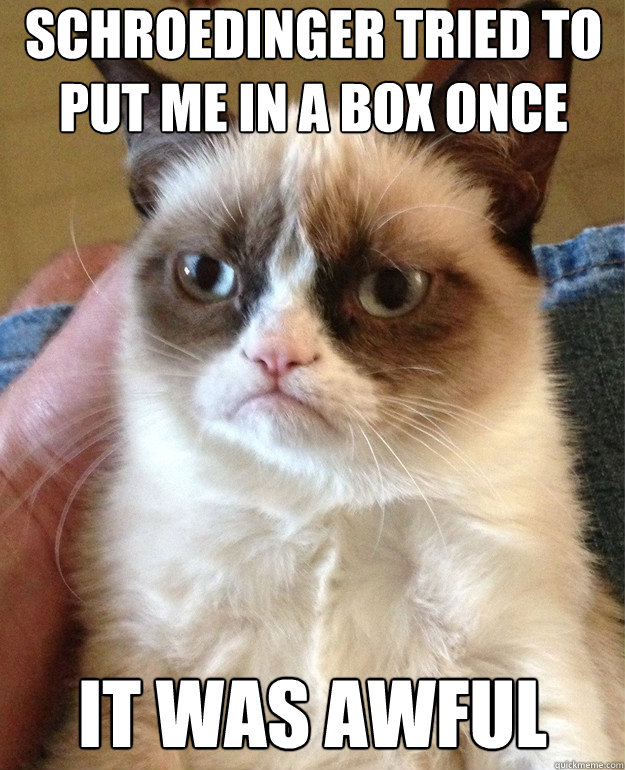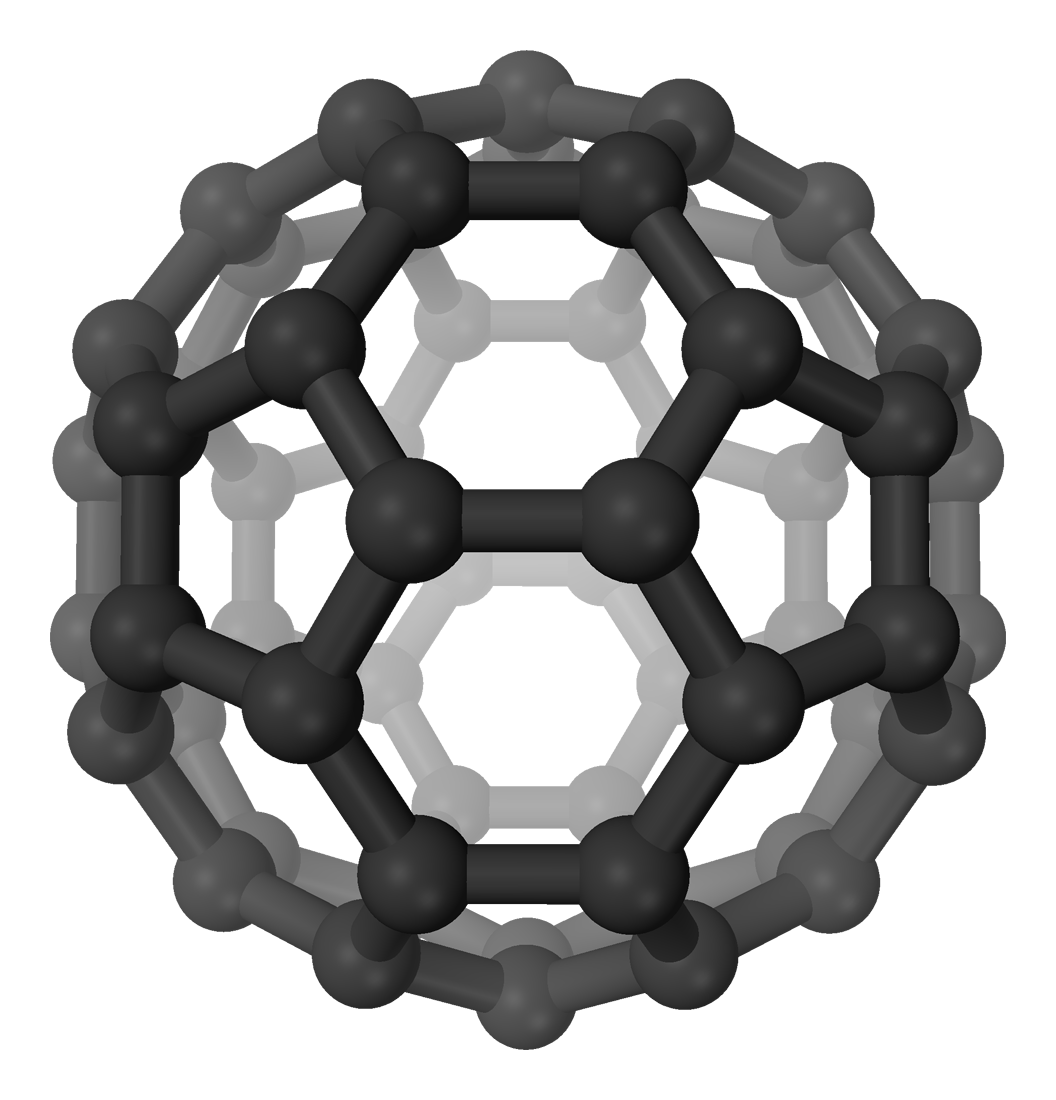

Matter-wave interferometry

SQUIDs
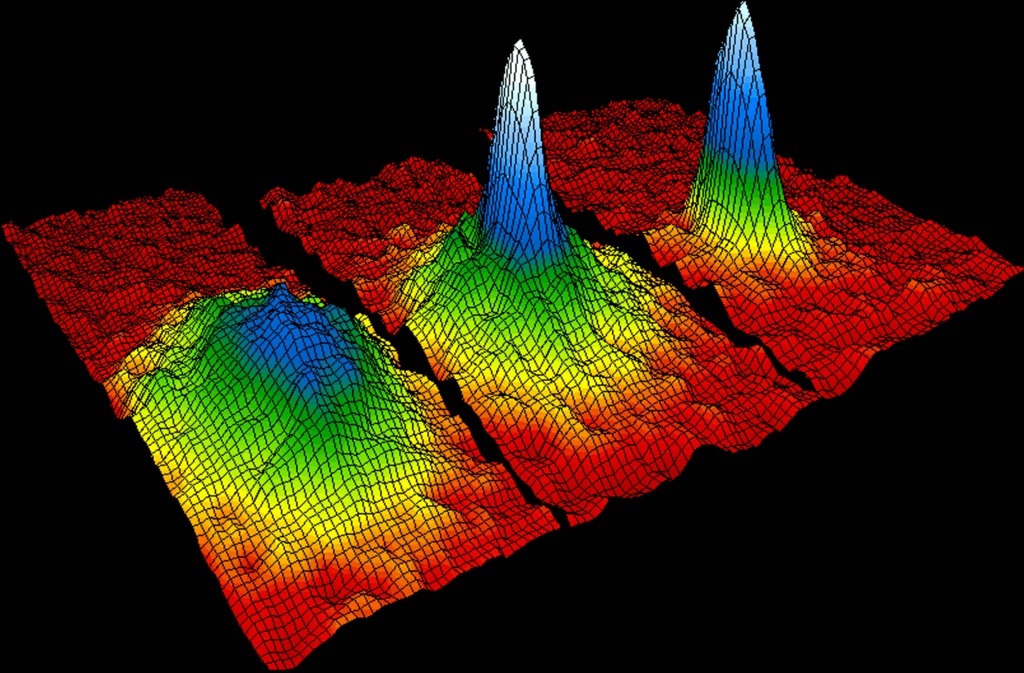
Bose-Einstein Condensates
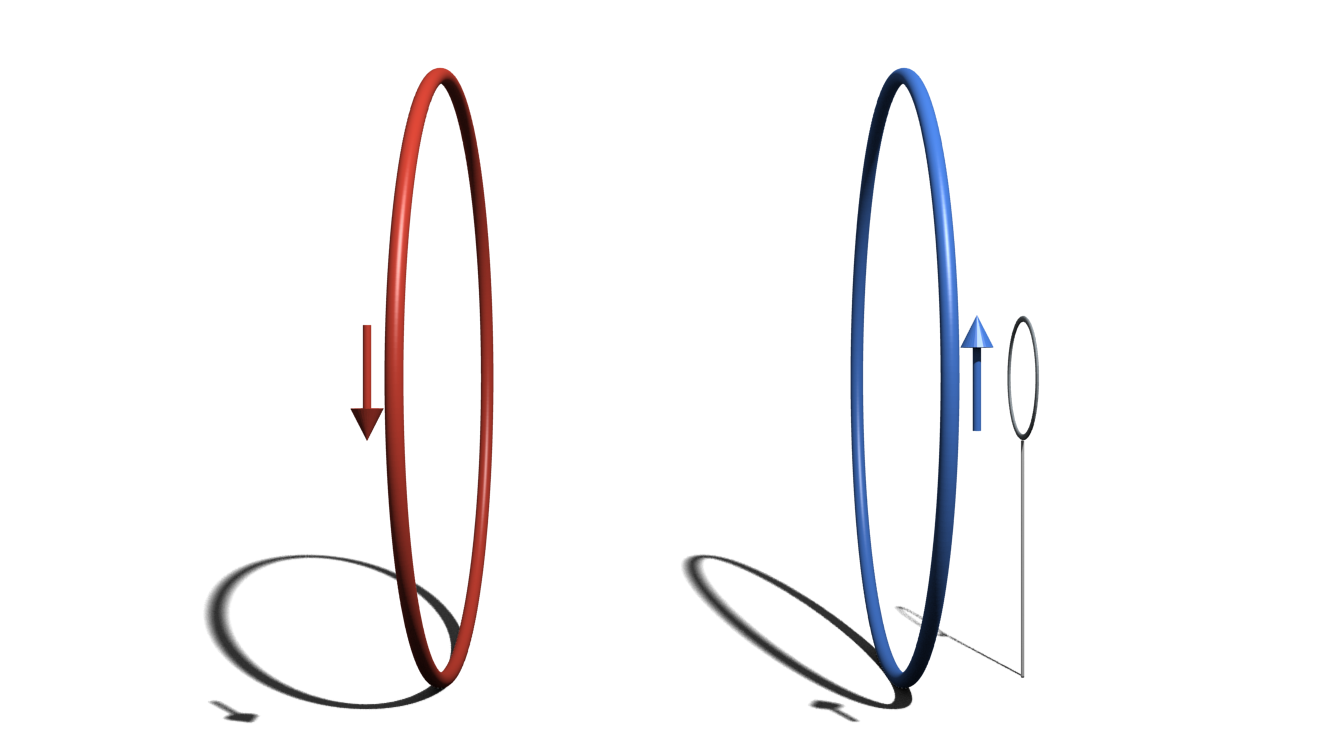
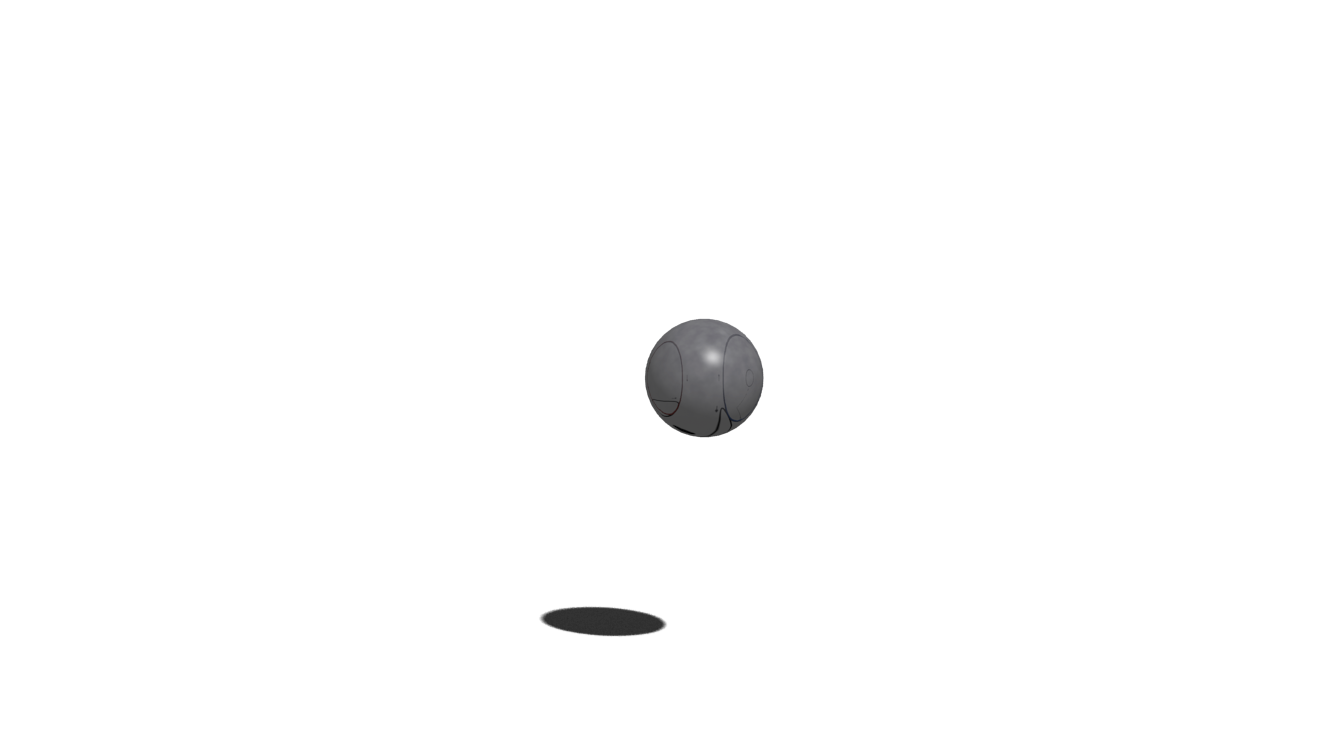
Opto- & Magnetomechanics
Are they macroscopic?
Macroscopicity
Behavior is neither
classical, nor an
accumulated quantum effect.Think Cooper pairs in a superconductor.
Examples:
GHZ state: Neff = N, macroscopic
Cooper pair: Neff = 2, microscopic
Measures for Neff
Disconnectivity
Two Measures: (not strictly Neff)
Extensive difference $\Lambda$: difference of states vs reference value (e.g. $\Delta \Phi / \Phi_0$)
Disconnectivity D: degree of entanglement, possibly reduced entropy
Examples:
GHZ State of N particles: D = N
C60: D ≈ 106
Atomic ensembles: D ≈ 107
SQUIDs: D ≈ 1010
DSC Measure
Idea: Compare realistic (e.g. BEC) ↔ GHZ states
$$\ket{\psi} = \frac{1}{\sqrt{K}} \left( \ket{0}^{\otimes N} + \ket{\epsilon}^{\otimes N} \right)$$ where $\left| \braket{0}{\epsilon} \right|^2 = 1 - \epsilon^2$.
Through decoherence rate / max distillation:
$$N_{eff} = N \epsilon^2$$
BM Measure
Can a state improve phase estimation in interferometry?
Let $\ket{\psi(t)} = e^{-i H t / \hbar} \ket{\psi}$ and
$\theta(\ket{\psi}) :=$ time to reach orthogonal state.
Observe that $\theta(\ket{\psi}) \ll \theta(\ket{0}), \theta(\ket{1})$. Think small oscillations in an interference pattern.
Define the effective particle number $$N_\text{eff} = \left[ \frac{\theta(\ket{0}) + \theta(\ket{1})}{\theta{\ket{\psi}}} \right]^2$$
Examples:
C60: N ≈ 5
SQUIDs: N ≈ 33
Optomechanical $\ket{0} + \ket{1}$: N = 1 (?)
KWDC Measure
Divide $\ket{0} + \ket{1}$ into maximal number (n) of subsystems, so that measuring one we can distinguish the states with precision $\delta$.
Define effective size Neff = n.
Here, macroscopic = locally distinguishable
MAvD Measure
How many single-particle operations do we need to apply to get from $\ket{0}$ to $\ket{1}$?
- Start with $\mathcal H_0 = \operatorname{span} \{ \ket{0} \}$
- Define $\mathcal H_i$ by applying all possible single particle operations on $\mathcal H_{i-1}$
- Write $\ket{1} = \sum_i P_i \ket{1} = \sum_i \lambda_i \ket{v_i}$
- Effective size $\avg{N} = \avg{\sum_i i \ket{v_i} \bra{v_i}}$
Examples:
GHZ: Neff = N
Superconducting qubit: Neff ≈ 1
Many photon states: Neff = 1
Fisher Information
Fisher Information: expected value of the observed information.
Inverse of Cramer-Rao-Bound, "key resource" for metrology.
Implicit form: $$(ds)_\text{Bures} = \frac{1}{2\hbar} \sqrt{\mathcal F(\rho, H)} dt$$
For pure states: $$\mathcal F(\psi, H) = 4 \left[ \langle H^2 \rangle - \langle H \rangle^2 \right]$$
Let $A = \sum_i A_i$ be a locally acting operator with $||A_i|| = 1$. $$N_\text{eff}^F = \operatorname{max}_A \mathcal F(\rho, A) / (4 N)$$
Better measure: relative Fisher information $$N_\text{eff} = \frac{2 N_\text{eff}^F(\ket{\psi})}{N_\text{eff}^F(\ket{0}) + N_\text{eff}^F(\ket{1})}$$
Common Problems
- Dependence on set of basis statesMany states look trivial in the right basis.
- Particle number ≠ Macroscopicitye.g. 10 photon NOON state is visible = macroscopic.
- What is the elementary particle?Molecules, Atoms, Protons & Neutrons, …
NH Measure
… call a quantum system the more macroscopic the better its experimental demostration rules out a minimal modification of quantum mechanics …
Minimal Extension of QM
All extensions classicalize the system:
$$\partial_t \rho_N = [H, \rho_N] / i \hbar + \mathcal L_N \rho_N$$- Invariant under Galilean trafo
- Leave exchange symmetry unaffected
- Innocent bystander condition Adding an uncorrelated system leaves reduced state unchanged.
- Scale invariant with respect to CM
For a single particle (using Holevo 1993):
$$\mathcal L_1 = \frac{1}{\tau} \left[ \int d^3 s d^3 q g(s, q) W(s, q) \rho W^\dagger (s, q) - \rho \right ]$$where $W(s, q) = \exp [ i/\hbar (P s - q X) ]$.
$g(s, q)$ a positive, isotropic, normalized phase space distribution with standard deviations $\sigma_s$, $\sigma_q$.
Matrix elements of $\rho$ that are larger than $\sigma_s$, $\sigma_q$ decay with $\tau$.
Using the other conditions we get, for a massive object (M, mass density $\varrho$) approximated by a single particle:
$$\frac{1}{\tau} = \frac{1}{\tau_e} \frac{1}{m_e^2} \int d^3 s d^3 q g_e(s, q) |\tilde \varrho(q)|^2$$ $$g(s, q) = \frac{\tau M^3}{\tau_e m_e^5} g_e(s M/m_e, q) |\tilde \varrho(q)|^2$$ Note that for an elementary particle $\tau = \tau_e (m_e/m)^2$Different experimental bounds:
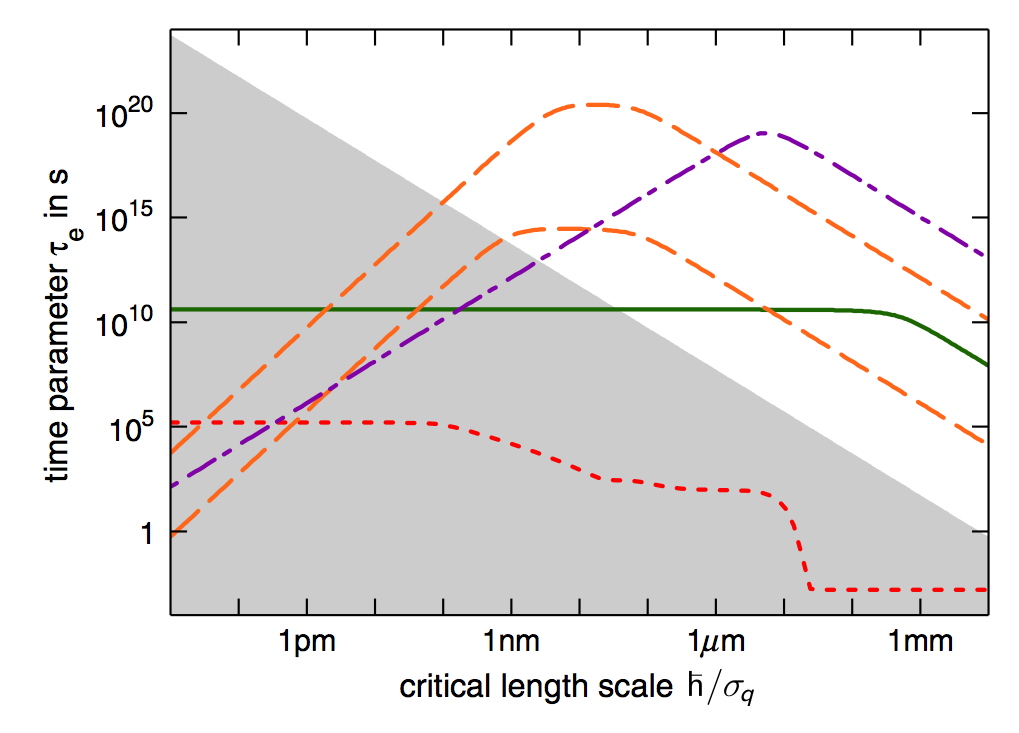
Define macroscopicity as
$$\mu = \log_{10} \left( \frac{\tau_e}{1~\text{s}} \right)$$ For double-slit-like experiments: $$\mu = \log_{10} \left[ \frac{1}{|\ln f|} \left(\frac{M}{m_e}\right) \frac{t}{1~\text{s}} \right]$$ where $f$ is the visibility.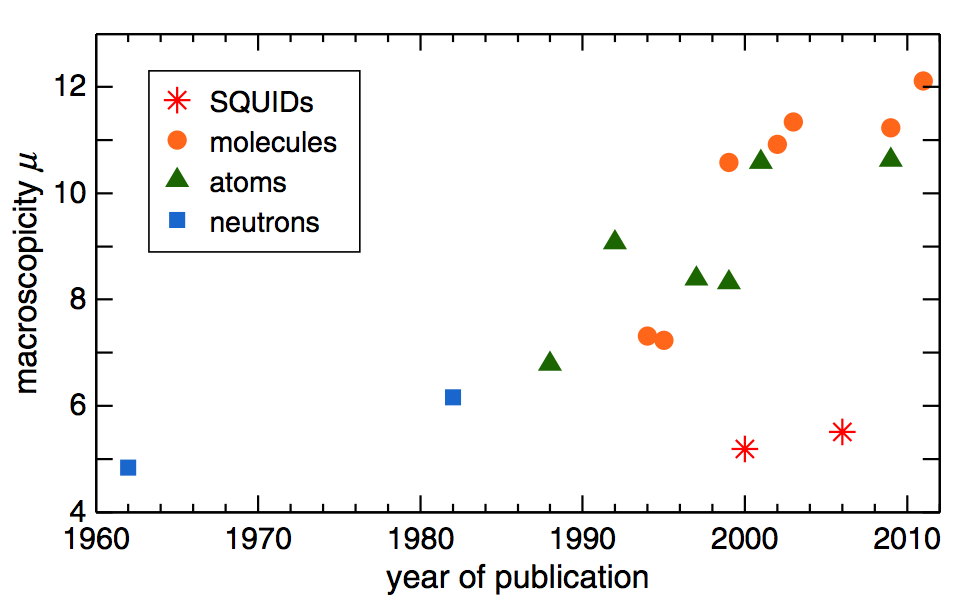
| Experiment | μ |
|---|---|
| Oscillating micromembrane | 11.5 |
| Hypothetical large SQUID | 14.5 |
| Talbot-Lau interference at 105 amu | 14.5 |
| Satellite atom (Cs) interferometer | 14.5 |
| Oscillating micromirror | 19.0 |
| Nanosphere interference | 20.5 |
| Talbot-Lau interference at 108 amu | 23.3 |
| Schrödinger gedanken experiment | ~57 |
Lessons learned
My gut reaction is that while the idea in this paper is a clever one, it is facing in an irrelevant direction. Rather than referring to quantum mechanics in its formulation, macroscopicity should instead reflect our ‘common-sense’ intuition of the difference between an electron being in an indefinite state and a cat being in an indefinite state.
- Tony Leggett
Subjective stuff is hard!
Approaches: particle number / experimental effects
What insight did we gain?
